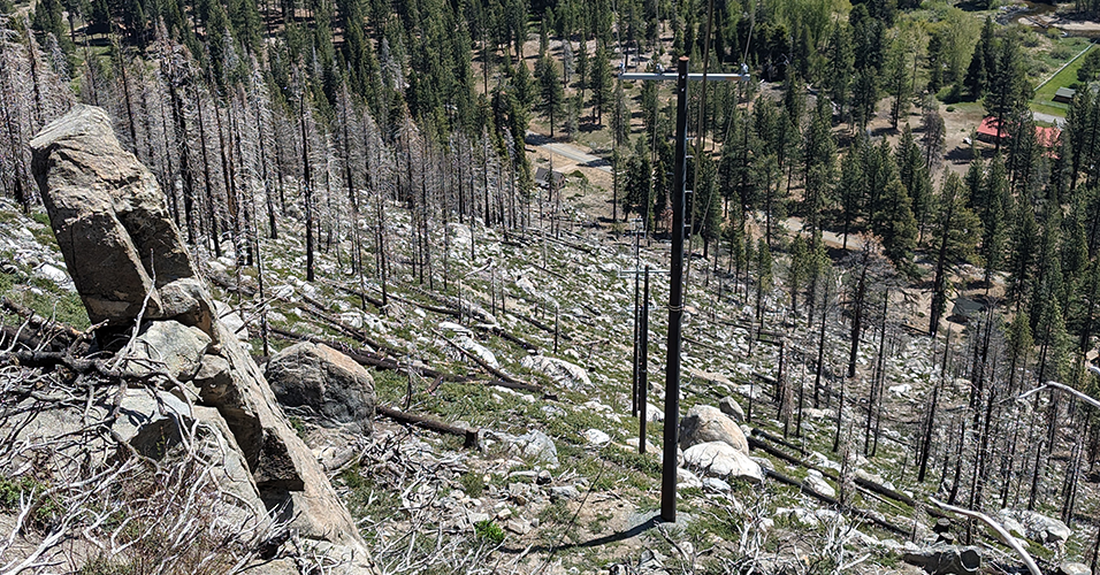
Utility poles are critical infrastructure components that support power lines and ensure efficient delivery of electricity. However, utility poles remain vulnerable to failure, which necessitates pole replacements to keep the system functioning.
The cost of a brand-new utility pole, including installation, can be as much as $5,600 or more. Many factors, such as the type and size of the pole, must be accounted for to determine the final price.
Addressing common causes of utility pole failure helps power companies, rural electric co-ops, and municipalities stay ahead of issues before they become costly problems. Let’s review some of the primary culprits and explore ways to manage them.
Severe Weather Conditions
Storms, hurricanes, and high winds are all top causes of utility pole failure. Extreme weather can knock down poles or cause structural damage, leading to widespread power outages. Poles that are old or in poor condition often fail to withstand strong winds, while fire and ice also pose significant risks to utility poles.
Wildfires can severely damage poles, particularly those made of wood, by charring or entirely burning them, leading to collapse. In colder regions, ice accumulation on poles and lines can increase weight and stress, causing the affected poles to crack or fall.
Utility companies should prioritize regular inspections to identify any structural weaknesses before storms hit. Power companies can work closely with businesses like McWane Poles to stay updated on the best maintenance practices for their pole materials, whether it’s wood, concrete, or ductile iron.
Vehicle Collisions
Power poles frequently line roadsides, making them vulnerable to vehicle impacts. Accidents where vehicles collide with poles happen often, leading to immediate utility pole failure.
Many power companies implement protective measures, such as barriers or distance-based placement, to reduce the risk of collisions. Choosing durable materials like ductile iron further mitigates the impact of vehicular accidents by ensuring poles are more resilient.
It’s important to note that while ductile iron is not indestructible, its failure mode typically results in a non-emergent situation. If an impact exceeds the pole’s tensile strength, it usually breaks between the ground line and impact zone or fractures above the impact zone if the tightly secured wiring at the top holds through the collision. In most cases, the wiring prevents the broken pole from falling completely, keeping it suspended to avoid contact with the ground.
Environmental Degradation
Over time, environmental factors like moisture, pests, woodpeckers, and decay weaken certain utility poles. Moisture can cause wood to rot, especially in high-humidity areas.
Additionally, termites and other pests can burrow into wooden poles, compromising their structural integrity. Power companies utilizing materials resistant to rot, corrosion, and pests extend the life of their infrastructure. At McWane Poles, we provide ductile iron poles that offer durability, minimizing long-term degradation issues.
Overloading
Utility poles support various types of equipment, from transformers to telecommunications lines. However, overloading these poles with too much weight leads to instability and potential failure. Extreme loads from ice accumulation or high winds add significant stress, pushing pole limits beyond their design specifications.
Companies must carefully calculate load limits and follow strict guidelines for how much equipment can be safely mounted on a pole, as failure to do so can cause poles to lean or snap. Regular assessments of weight distribution on poles ensures compliance with load limits and maintains optimal working conditions.
Inadequate Maintenance
A lack of routine maintenance often leads to utility pole failure. Issues that go unnoticed can escalate quickly, making poles more susceptible to damage. Regular inspection schedules help power companies identify early signs of pole weakness.
Repairing minor damage early prevents more significant problems later, saving companies both time and costs. Furthermore, businesses like McWane Poles provide solutions designed to resist harsh environmental conditions, enhancing the lifespan of utility poles.
Utility pole failure can be catastrophic, leading to major disruptions to power services and hefty repair costs. Addressing the common causes of utility pole failures allows power companies, co-ops, and municipalities to reduce these risks and enhance the longevity of their infrastructure.

